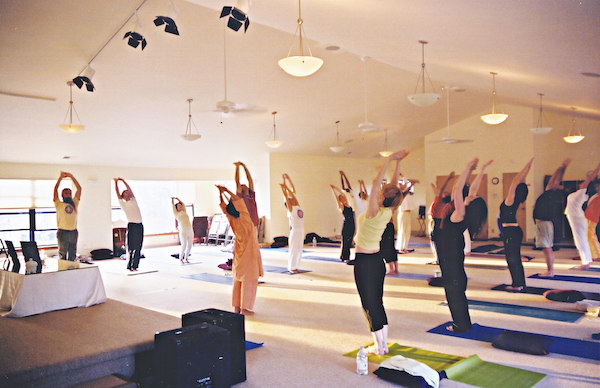
We all know yoga studios benefit from creating a powerful and cohesive internal community, but how many of them accurately reflect their surrounding neighborhoods?
Back in 2013, I read this great sentence on the Huffington Post and it sent me all over the world in search of ways to align the faces on our mats with the faces in our streets: “[I need yoga to be a] community that acts consciously and pragmatically for the common good. Community that is not bankrupted by its exclusive consumer classism. Community that reaches out as much as it reaches in.”
Indeed our yoga studios are reaching in, but the next time you’re front-side resting after an amazing spinal series, your head turned toward an adjacent yogi, ask yourself: If I reach out and make an introduction, am I meeting someone who really lives a block away?
My interpretation of “common good” is a yoga studio doing great things for the entire cultural spectrum, not just the Caucasian majority. The opportunity for ethnic diversifying is no mystery, confessed by headlines such as, “Studies Prove Yoga Relieves Stress, So Why The Absence of Yoga Studios in Black Communities?” and “Diversity in Yoga—The Great White Female Yoga.”
What I learn as Director of The Yoga and Mindful Literature Initiative for Girls is there are countless yoga studios out there (particularly with similar programs for at-risk youth) that do an astonishing amount of “good”—but by whose definition? Assuming what is beneficial to the community without directly asking for their input is exactly what Peter Buffet called “philanthropic colonialism” in a New York Times Op-Ed article: “The act of transplanting what works in one setting directly into another with little regard for culture, geography, or societal norms.”
Tip 1: Get to surveying! What better way to culturally align yoga studios than by asking our diverse neighbors what defines a “good” class or experience?
Eliminating “exclusive consumer classism” brings to mind two more reach-out worthy key players in the neighborhood: one is the predominant socioeconomic class. For example in New York, about 44 percent of practitioners make over $75,000 per year—which justifies some of the absurd class prices over $30, right?
Think again!
After researching Williamsburg, the future location of my own yoga studio, I found “[it] is home to more recipients of public assistance—that is, welfare—than any other part of the city, with 66% of all residents receiving assistance” (Free Williamsburg, 2014). There are myriad ways to make yoga studios more financially accessible to residents living in the area, and more often than not they will differ from price points set by the average yoga consumer.
Tip 2: Scaling prices to fit the specific neighborhood’s needs and offering work-study options will match the socioeconomic environment inside yoga studios with everyone who formerly felt “on the outside” because of money.
Additionally, lets not forget to decrease that exclusivity by including local religious groups. In 2011, CNN published an article entitled, “Fight emerges over yoga’s religious roots” that detailed the Hindu American Foundation’s efforts to bring Western yoga back to its religious heritage, yet other sources about yoga in the Hasidic community remark how the practice became accessible to them by adding long skirts, subtracting chanting, and dividing classes by gender. I believe there is no need to fight over this, but instead and always, always, always, defer to the power of each neighborhood in determining the best type of yoga studio to build within it.
Tip 3: Practice ahimsa or non-violence: there is no need to fight about the spiritual aspect of yoga when, if need be, different types of “religion-friendly” classes can co-exist within a single yoga studio.
Since reading that Huffington Post quote two years ago, I have traveled to over 13 countries in search of how yoga studios can be more accessible and sustainable to everyone. From Germany to Malaysia to Australia I observe that we never have to travel very far at all. To make our meditations and workshops more impactful, we can focus on topics—ranging from emotional resilience to cardiovascular strength—that improve local health statistics.
Do 12% of individuals in the area experience severe mental distress? Are 25% obese? If we find the ratio of men to women practicing yoga is still skewed no matter what neighborhood we cater to, we can take a cue from the Yogi Times and create some classes that are “more competitive” (Who is the Yoga Community?). Starting from the inside out, I envision yoga studios that “elevate the global economy and close gender gaps” by offering continuing education services to their 82.2% female population.
Tip 4: Once we achieve a reverberating impact on our communities close to home, as defined by the communities themselves, we can then begin to reach out even further.
Relephant Favorite:
Confessions of a Yoga Studio Owner.
~
Author: Corinne Wainer
Editor: Travis May
Images: Wiki Commons






Read 0 comments and reply